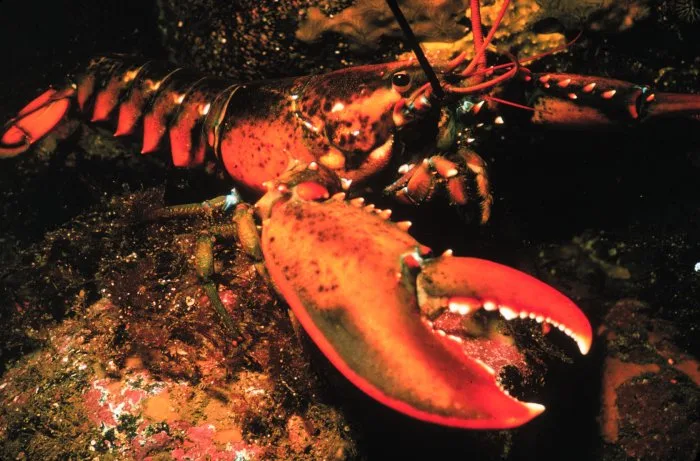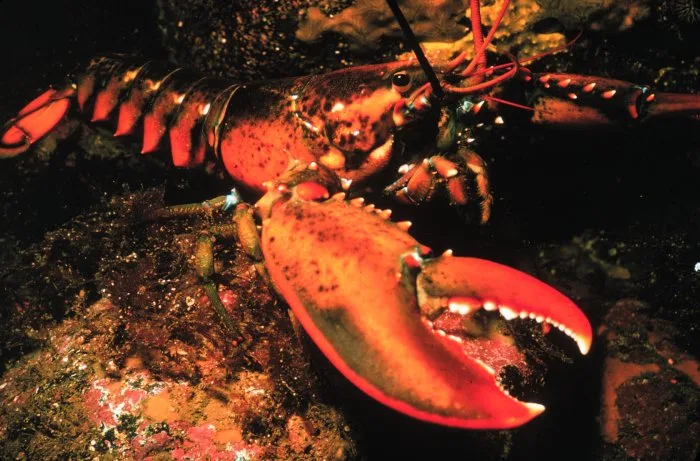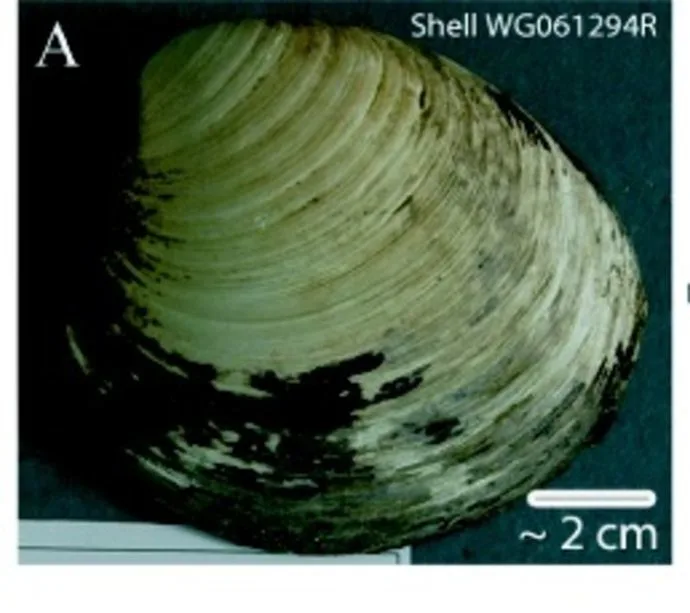
Zombie moss? Our list of six really long-lived Earth organisms
A story making the rounds this week gives an idea of just how long lifeforms on Earth can live if given the chance.
Apparently, not even being buried beneath a glacier for a couple of centuries can 100 per cent guarantee the death of a hardy patch of moss. Not in the Arctic, at least.
A story published in the Washington Post this week, ostensibly about how organisms long thought dead are returning to life as glaciers and permafrost melt, features just such a moss. Recovered from Ellesmere Island by University of Alberta researcher Catherine La Farge a decade ago, several samples of the moss thrived when taken to a warm laboratory, after centuries in the deep freeze.
Something else in that feature raised eyebrows: Another group of scientists thawed out several nematodes -- segmented worms half a millimetre long -- and found several also returned to life. One specimen was estimated at around 41,000 years old.
That puts us in mind of just how long particular life forms can life, so we cast about, and here are six particularly long-lived individuals.
GEORGE THE LOBSTER: 140 YEARS OLD

*Image: American lobster. Credit: NOAA/Wikimedia Commons*
The American Lobster, like the tasty-looking example up above, is an enduring symbol of Atlantic Canada. Communities all along Canada’s east coast rely on it for sustenance and their economy, selling to major markets in the United States.
So it was with George, a 20-pound monster hauled up over side off the shores of Newfoundland in late 2008. He was sold to a restaurant in New York City for $100 early the following year.
Before you start worrying, you needn't: The restaurant owner knew the marvel he had, so rather than go into the pot, George became the restaurant’s mascot.
He drew a few crowds, and no wonder. The restaurant owner told CNN that, at 20 lbs, George was around 140 years old, based on the average rate of growth per year.
We’re not sure how legit that is, but if true, that means George was spawned in 1869. Canada was two years old, and George’s home province of Newfoundland was 80 years away from joining it.
The show only lasted a few weeks before PETA got wind of it, and started lobbying for George’s release. The owners eventually relented, and PETA members drove the beastie down to Maine before releasing him into the wild.
HANAKO THE KOI: 226 YEARS (MAYBE)
You’ve seen these guys milling around tranquil garden pools. Most associated with Japanese culture, they’re an enduring symbol of piscine dignity and grace, provided you never see them at feeding time:
Their average lifespan depends on how well they’re cared for, but it's generally accepted to be 25-35 years. That’s long for a fish, but when people talk about their longevity, they’re almost always referencing outliers living for a century or more.
Unofficially, the oldest member of this species was one called Hanako, in Japan. Its last owner, Komei Koshihara, inherited it, and out of curiosity, took it to a researcher, who analyzed the rings on its scales.
The result? Hanako was 215 years old, apparently having been born in 1751, the same year King George III ascended the throne of England.
That analysis was in 1966, and Hanako made it to 226 years of age, before dying in 1977.
Koshihara had the scientist do the same test on the five other carp in Hanako’s pond. All were more than 100 years of age.
By all accounts, she was very affectionate toward her various owners, even to the point of coming when called. The main source of this heart-warming story seems to be the transcript of a speech her owner gave on Japanese radio (you can find it in in this forum).
So either Hanako resided in the actual fountain of youth, or someone botched the science. It may have been the latter. Despite being repeated over and over among koi enthusiasts (it’s even mentioned in this article in the UK’s Guardian), there’s an awful lot of skepticism surrounding the story.
One author, for example, hypothesizes that the researcher drew the wrong conclusions over how fish scale analysis actually works. Leave it to science to spoil a good urban legend.
ADWAITA: 250 YEARS OLD
Here’s another species that’s famous for living practically forever: The tortoise.
The most famous examples of the immortal kind are conventionally known to be from the Galapagos Islands, but another variety that just refuses to go before they’re good and ready come from the Indian Ocean archipelago of the Seychelles, where the largest in-wild population still lives.
They’re bred in captivity elsewhere. Here’s a hungry and feisty one supposedly in nearby Mauritius:
This source says they were actually one of the first species to attract the attention of environmental protectionists. But the sailors who captured one specimen, known as Adwaita, probably were likely concerned less with conservation and more with sucking up when they presented the big guy as a present to Robert Clive, Britain’s big man in India.
He was passed down through the ages, eventually being given to the Alipore Zoo in Calcutta. The BBC reports official records showed him to be only 150 years old when he died in 2006, after he developed an infection from a crack in his shell. But that story still quotes Indian government officials as saying he may have been as old as 250.
They sent his shell for carbon dating, but the well-known Clive story relies on the higher number. If the older age is to be believed, Adwaita would have been born in 1756.
The British were fighting the French and their allies around the world, and while Clive was carrying on the banner in India, the two nations were duking it out in Canada as well, just a few years before the British conquest of New France.
Adwaita probably was more concerned with his next meal at that time, and right up until his death, he was a prized possession of the zoo. The first time he took ill, from a leg infection, the zoo put together an entire medical advisory board just to deal with him.
They really liked that tortoise.
MING THE CLAM: 507 YEARS OLD
When this unassuming little bivalve was dredged up from the waters off of Iceland, scientists at Bangor University in Wales couldn’t have known they were in the possession of what may have been the oldest living creature in the seas.
At first, they were so hasty, they botched the age. “Ming”, as the thing was called, was estimated to be around 405 or so years.

Image: Alan D Wanamaker Jr., Jan Heinemeier, James D Scourse, Christopher A Richardson, Paul G Butler, Jón Eiríksson, Karen Luise Knudsen
Then they checked their findings, and it turned out it was more than 500 years old (according to the BBC) with an estimated birth date in the late 1490s, when Europeans were just beginning to encounter the peoples of the Americas.
They figured this out by measuring the growth of the rings in its shell. It was only a few inches across, but each ring told a different story of a different year, as the growth is based on climate factors, food and temperature.
Unfortunately, in their brave quest to unlock new mysteries of the ageing process…well, they, uh, killed Ming.
Yep. Killed him. Oldest known thing in the sea. Killed, and in total ignorance of the incredibly long life they were snuffing out.
Ah well. These things happen. And you’ll notice, when describing our boy Ming, we said oldest “creature,” not organism. The next thing on this list makes everything else look like about as long-lived as newly hatched mayflies.
PANDO: 80,000 YEARS
There's no point comparing this quaking aspen to any point in human history. When Pando's first sapling sprouted, humanity had barely begun to spread across our planet's face.

Image Credit: J. Zapell/Wikimedia Commons
So which one of those trees is the ancient behemoth? Answer: ALL OF THEM. Believe it or not, that entire thicket (around 43,000 trees according to this source) is a single organism.
Quaking aspens are what is known as a "clonal colony." Those look like a bunch of different trees, but they're all actually genetically identical offshoots from a single, massive root system. The trunks grow and die, to be replaced by new ones.
Or that's supposed to be how it is. Conservationists are worried about Pando, since they've noticed the dying trunks aren't being replaced by as much new growth.
Humans are a factor, but so is drought, disease, overgrazing and insects.
Hopefully they can find a solution to the problem. Pando is around eight times older than human civilization already. We feel the ultimate grandpa deserves a shot of outlasting us altogether.
WATCH BELOW: WORLD'S OLDEST WATER FOUND IN CANADIAN TOWN
OCEAN FLOOR BACTERIA: 86 MILLION YEARS
Though to the human eye, the ocean floor may seem lifeless, it’s actually teeming with life. Popular Science says around 90 per cent of Earth’s microbes dwell beneath the ocean soil, and some of them really, really seem to want to live forever.
In 2009, a group of Danish and German scientists went to the North Pacific Gyre, an area of the ocean that is relatively nutrient poor, and started drilling ocean sediment to see what they would find. And when they looked at cores taken about 30 metres beneath the ocean floor, they found microbes that had survived -- barely -- despite a near total lack of nutrients.
For how long? The researchers say they’ve been living their long and miserable lives for 86 million years. The dinosaurs were still merrily ruling the land when these microbes began descending into the mud, and Popular Science says they’ve not had access to a fresh food supply since then.
"They left the surface 86 million years ago with one lunch box, and they're still eating out of it," Hans Røy of Aarhus University told NPR. "It's like they're splitting a pie, and they keep splitting in half and in half and in half, but nobody ever eats the last crumble. It's quite remarkable."
They seem to be surviving by metabolizing what little nourishment they have very, very slowly, such that it would take them a thousand years to double their mass and, presumably, split (an E. coli bacterium does that in less than half an hour). Nevertheless, the researchers say they might yet outlive human civilization.
"These organisms have no clue that we're even around," Roy told NPR. "They could be sitting down there for 100 million years, and the whole surface could be one scorched desert, and they still wouldn't know it."











